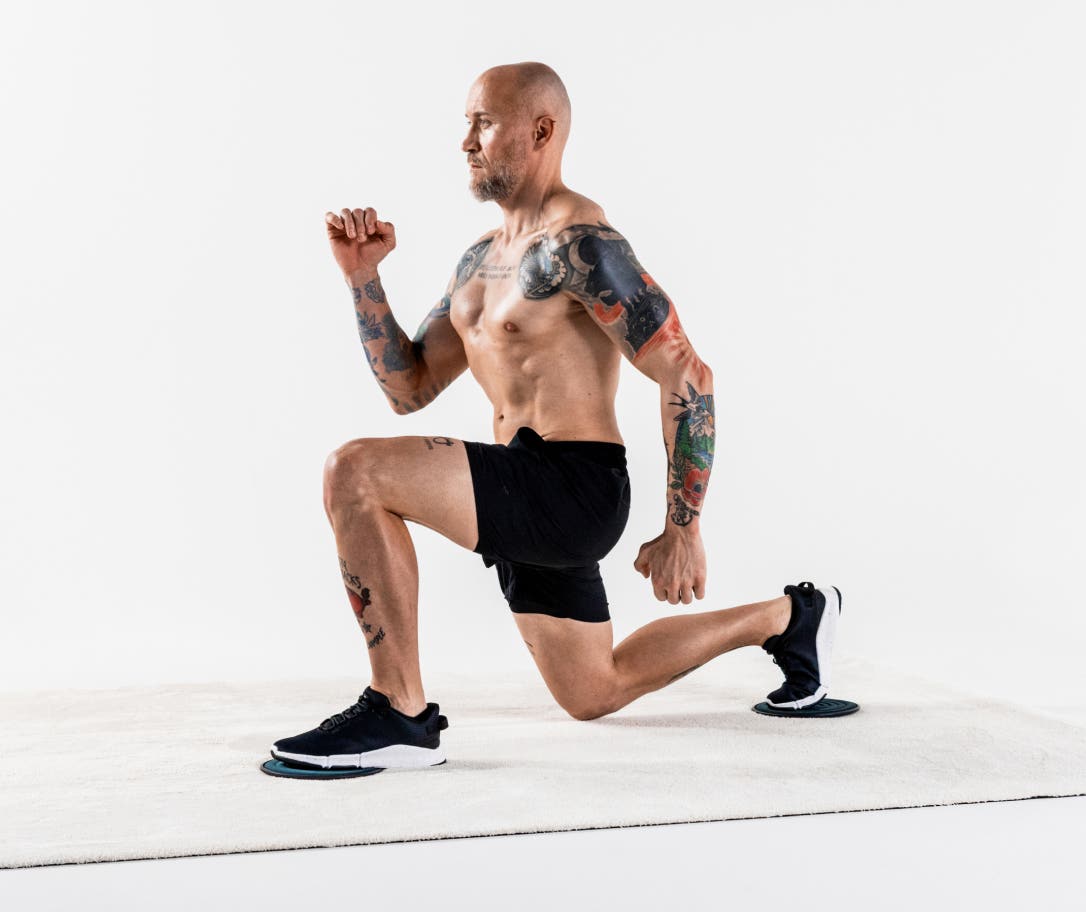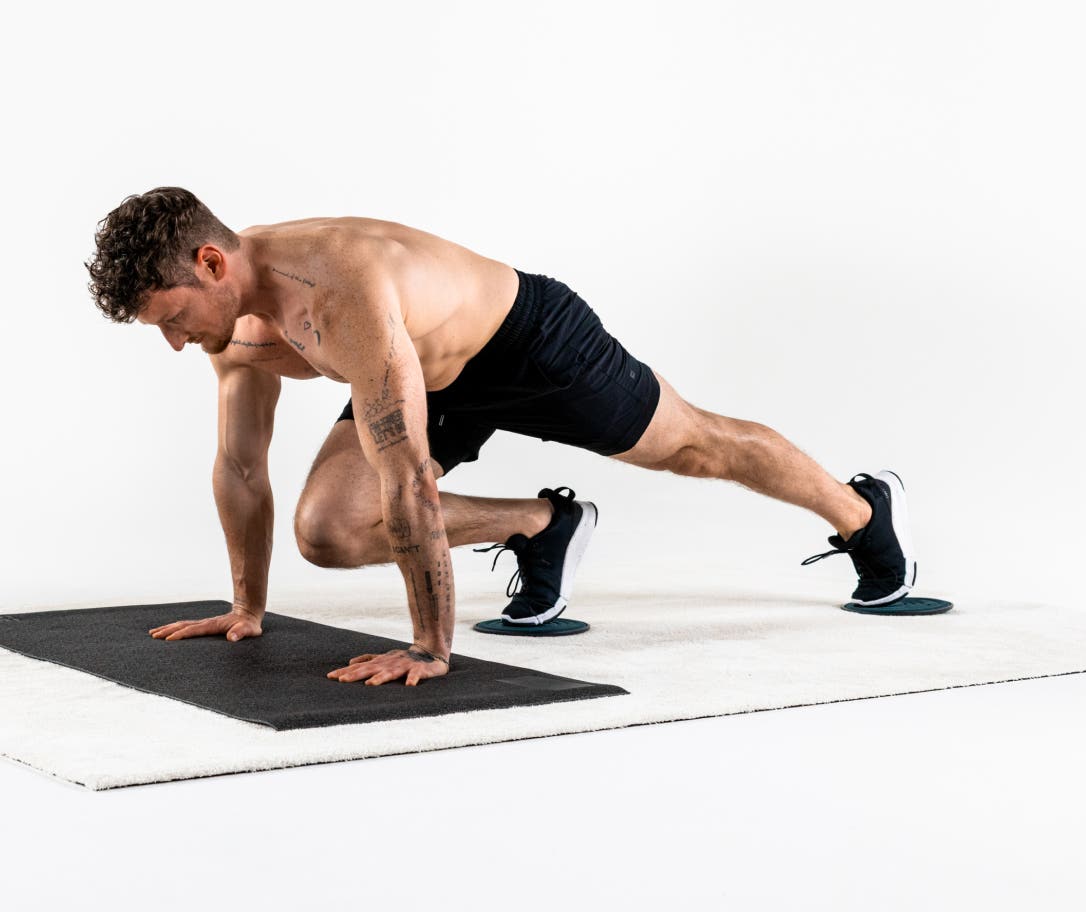When it comes to adding variety and intensity to your workout routine, gliding discs can be a game-changer.
These simple yet effective tools are gaining popularity due to their ability to target multiple muscle groups while simultaneously improving strength, stability, and core engagement.
What are gliding discs?
Gliding discs, also known as sliding discs, exercise sliders, or gliders, are small, circular discs typically made of plastic or foam. They are used in various fitness routines to add a sliding, unstable surface that challenges the muscles and engages the core.
These discs come in different designs, but their primary function remains the same: they allow for smooth, controlled movements that require balance and strength to perform effectively.
There are two main types of gliding discs: one-sided and two-sided.
One-sided discs are typically used on hard surfaces like hardwood floors or tile, as they have a slick surface on one side.
Two-sided gliding discs are designed with one soft, fabric side for hard floors and a hard side for use on carpet or other soft surfaces. This versatility ensures you can use them in a variety of settings.

What are the benefits of training with gliding discs?
Strength and stability
One of the primary benefits of using gliding discs is the strength you build from the added instability, as well as the control that’s required during the negative (or eccentric) portion of each exercise.
Whether you’re targeting your upper body, lower body, or core, the instability created by the discs adds a layer of difficulty that leads to greater muscle activation and strength development.
Core engagement
Perhaps one of the most significant benefits of gliding discs is their ability to engage and strengthen your core. Because many exercises require a strong focus on balance and stability, your abdominal and lower back muscles are constantly activated.2
Exercises like Gliding Mountain Climbers and Gliding Pikes are particularly effective at building core strength, as the movement requires stability and coordination.
Balance
Using gliding discs helps improve balance. This is due to the increased challenge of maintaining control over the sliding motion.
As you perform exercises that target various muscle groups, your body will become more adept at stabilizing and controlling your movements, resulting in better overall balance.
Low impact
Another key benefit of gliding discs is that they provide a low-impact workout. Since the discs glide smoothly across the floor, they reduce the strain on your joints, making them ideal for those recovering from injuries or participating in physical therapy.
The sliding motion can also be easier on the knees and lower back compared to more traditional exercises like running or jumping.
Low cost, compact, portable
Gliding discs are incredibly affordable compared to other gym equipment. They are small, lightweight, and easy to store, making them a perfect option for home workouts.3
Whether you're in a small apartment or have limited space, gliding discs are an excellent way to diversify your fitness routine without the need for large, expensive equipment.

Drawbacks of gliding discs
While gliding discs offer many advantages, there are a few considerations to keep in mind. The primary challenge with exercise sliders is that they require an appropriate surface for optimal performance.
On certain surfaces, such as thick carpet or rough floors, the discs may not glide as smoothly, reducing their effectiveness.
Beginners may find the exercises challenging at first due to the balance and stability required. With practice, these challenges can be overcome.
Key considerations for gliding discs
Flooring compatibility
The type of flooring in your workout space is essential when choosing gliding discs.
If you're working out on hardwood or tile, you'll want a fabric-sided disc to ensure proper gliding.
For carpet or rug-covered surfaces, a smooth, plastic disc will work best.
How to use them on different types of surfaces
If you're using gliding discs on a slick surface, such as tile, be cautious about the speed and intensity of your movements to avoid injury.
On carpeted floors, you’ll have to use a bit more force to get the discs to glide, but the stability they provide can help with balance and control.
Proper form & mistakes to avoid
Form is crucial when using gliding discs, as improper technique can lead to unnecessary or ineffective workouts.
Always ensure that your knees track in the same direction as your toes during Lunges, and engage your core during exercises to maintain stability.
It's also important to avoid letting your hips drop too low or rise too high during exercises like Gliding Pushups or Gliding Plank Jacks, as this can strain your lower back.

How to incorporate gliding discs into your workout routine
Gliding discs activate both primary and secondary muscles by increasing the range of motion in exercises.
A Gliding Lunge, for example, works not only the quads and hamstrings but also the stabilizing muscles in the hips and core. This makes each exercise more challenging, helping you to build functional strength.1
Below are a few more exercises you can level up by adding gliding discs.
Upper body examples
Gliding Pushup with Plank Jacks: Start in a Pushup position, with your feet on the discs. Perform a Pushup, then jump your feet out and back together like a Plank Jack, before repeating the Pushup.
Lower body examples
Gliding Lunges: Start in a standing position, place one foot on a gliding disc, and slide it back into a Lunge. Push back to the starting position and repeat on the other side.
Gliding Hamstring Curls: Lie on your back with your feet on the discs, slide your feet toward your glutes, then slowly extend them back out.
Core examples
Gliding Mountain Climbers: From a Plank position, alternate driving your knees toward your chest while keeping your body in a stable, straight line.
Gliding Pikes: In a Plank position, use the discs to bring your hips up toward the ceiling, engaging your core throughout the movement.
Full body examples
Gliding Burpees: Perform a regular Burpee, but add a sliding motion with the discs when getting to and from the Pushup position, engaging your core and stabilizing muscles for added challenge.
Let’s recap
Gliding discs are a low-cost, versatile tool that can add an extra challenge to your workouts. They engage the core, improve stability, and help build strength in both upper and lower body exercises.
With a range of exercises to choose from, including Gliding Pushups, Lunges, and Mountain Climbers, there are plenty of ways to incorporate these discs into your routine.
Sources
[1] Anderson, R. (2018). Strength training with stability tools: Gliding discs and beyond. Fitness Journal, 25(3), 34-40.
[2] Chen, M., & Liu, J. (2020). Gliding discs for core strengthening exercises: A systematic review. Sports Medicine, 50(8), 1159-1166.
[3] Harris, T. (2017). The versatility of gliding discs in fitness routines. Journal of Strength and Conditioning Research, 31(12), 3287-3295.